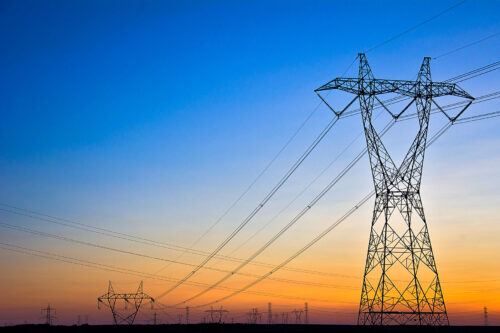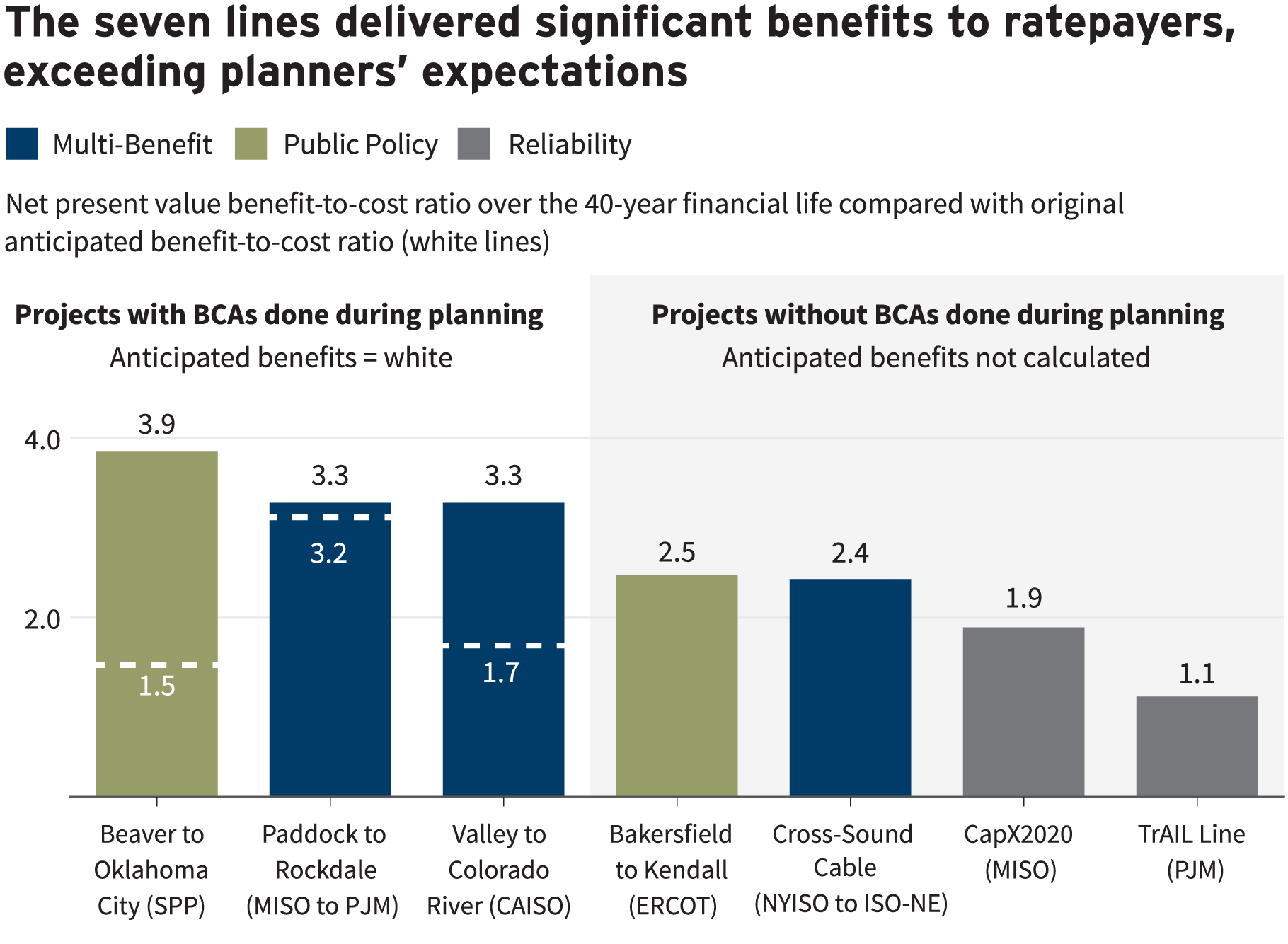
Paving the Way for Cost-Effective Transmission
Regional transmission pays off big-time. So, why aren’t utilities building it?
Imagine waking up to the sound of jackhammers — week after week — for months. Your street has 20 potholes, but instead of repaving the aging road, your city is sending a new crew each week to fix one pothole at a time. It’s disruptive, inefficient, and far more expensive than necessary.
Unfortunately, this pothole-by-pothole approach mirrors how many utilities are investing in our electric grid, and this fragmented, uncoordinated processes is driving up electricity bills for American consumers. At a time when the United States urgently needs transmission investment to maintain system reliability and affordability, utilities are planning transmission using two separate and misaligned frameworks: regional transmission and local transmission.
Regional transmission projects are planned by a regional entity, such as a regional transmission organization or independent system operator, to efficiently meet total system needs by spanning multiple utility footprints. Local transmission projects are planned by individual utilities with no evaluation of overall regional system need or the potential cost efficiencies that come with regional planning.
This awkward and uncoordinated planning not only increases costs to ratepayers but also slows the buildout of needed high-voltage transmission that would lower bills.
A regulatory gap is driving inefficient transmission investment
Currently, local projects (individual potholes) do not require the same detailed state or federal regulatory scrutiny as regional projects (holistic road upgrades). This “regulatory gap,” which we describe in detail in Mind the Regulatory Gap: How to Enhance Local Transmission Oversight, creates the perverse incentive for utilities to invest more in local projects, at the detriment of regional planning.
The result? While ratepayer bills are rising from increasing transmission investment, their dollars aren’t going nearly as far. Overall miles of high-voltage transmission being built in the United States have been on a steady decline, reaching an all-time low of only 55 miles in 2023. And, the United States has been spending more on lower voltage transmission projects (<230 kV) and less on higher voltage ones, as illustrated in the chart below, resulting in less bang per buck.
RMI Graphic. Source: Mind the Regulatory Gap (2024) and FERC State of the Markets Report (2021).
But it doesn’t have to be this way. Rather than burdening ratepayers with inefficient local projects, utilities can lower costs and improve reliability through coordinated regional planning.
Regional transmission delivers cost savings
Regional transmission investments have consistently demonstrated their value, delivering substantial cost savings and system-wide benefits. We detail examples of these savings in our recent report, High Voltage, High Reward Transmission: Evidence from Operational Transmission Projects that Deliver Cost Savings to American Consumers, that conducts a set of ex-post cost-benefit analyses (BCAs) on seven regional and interregional lines across the United States. Every project delivered substantial savings to ratepayers, with returns ranging from $1.10 to $3.90 per dollar of ratepayer costs. These findings demonstrate that large-scale projects, when designed and implemented effectively, are poised to pay for themselves, often many times over.

RMI Graphic. Source: RMI analysis and multiple data sources; see Appendix C of the High Voltage, High Reward Transmission report for a full list of data sources.
While transmission projects are typically designed to meet specific needs, our analysis also found that all seven projects delivered benefits that extended far beyond their initial purpose.
Each of the five projects designed to provide economic (blue) and public policy (green) benefits significantly surpassed the Federal Energy Regulatory Commission (FERC) 1.25 benefit-to-cost ratio threshold established in Order 1000. Additionally, the three projects with pre-existing benefit-cost analyses (white dashes) provided greater benefits than originally projected.
Meanwhile, the two reliability-driven projects (gray) delivered unanticipated economic savings that went beyond these projects’ original mandate of keeping the lights on. Though not required to meet FERC’s 1.25 benefit-to-cost standard, the studied regional reliability projects still approached or exceeded the threshold.
These findings highlight large-scale transmission as a win-win solution, addressing today’s energy challenges while delivering lasting ratepayer savings. Beyond strengthening reliability and resilience, these projects reduce generation costs, integrate lower-cost energy sources, and drive economic development. Prioritizing strategic regional transmission planning will provide lasting value for American consumers and businesses — all while strengthening the grid.
Prioritizing regional planning
So, how do we shift utilities away from costly, piecemeal local planning toward proven, cost-effective regional planning?
The good news is that FERC’s new Order 1920 provides state and federal regulators with a clear opportunity to close the regulatory gap and refocus spending on regional, not local, transmission. Regions already doing long-term regional planning roughly consistent with Order 1920 are reaping the benefits, providing a strong framework for success. For instance, MISO’s Long Range Transmission Planning process has approved two portfolios with benefit-to-cost ratios ranging from 2.6 to 3.8 for the first portfolio and 1.8 to 3.5 for the second.
In addition to fully implementing Order 1920, FERC and state regulators can take concrete actions to close the regulatory gap:
- FERC should require regional-first planning across all US regional planning entities. Such planning would require complete and holistic consideration of local projects in the context of regional planning needs to ensure that local and regional planning processes are synchronized to reduce total costs to ratepayers. It would include a full right-sizing analysis to determine if local projects can also address regional needs, building on the right-sizing provisions in Order 1920.
- FERC should reform formula ratemaking procedures to require greater scrutiny of local transmission projects and eliminate the automatic presumption of prudence. Currently, formula rates are allowing utilities to recoup costs for local transmission with virtually no federal oversight.
- FERC should standardize local project definitions and tracking to make it easier nationwide for state regulators to gain access to transparent information and data on local project spending trends.
- State public utility commissions should update their Certificate of Public Convenience and Necessity (CPCN) proceedings to more comprehensively consider local transmission projects, including lower-voltage projects or rebuilds of existing or aging infrastructure, which many states exempt from CPCN requirements (see Exhibit 5 in our report for more details).
For more details and a complete list of recommendations, we encourage readers to refer to the Mind the Regulatory Gap report. For more detailed findings on the benefits of regional transmission, we encourage readers to refer to the High Voltage, High Reward Transmission report.
America’s power grid shouldn’t be built like a never-ending pothole repair project — unnecessarily localized and costly. The opportunity to close the regulatory gap and build a more reliable, cost-effective grid through regional planning is here. It’s time to stop patching the cracks one by one and start paving the way for a comprehensive, lasting foundation.
